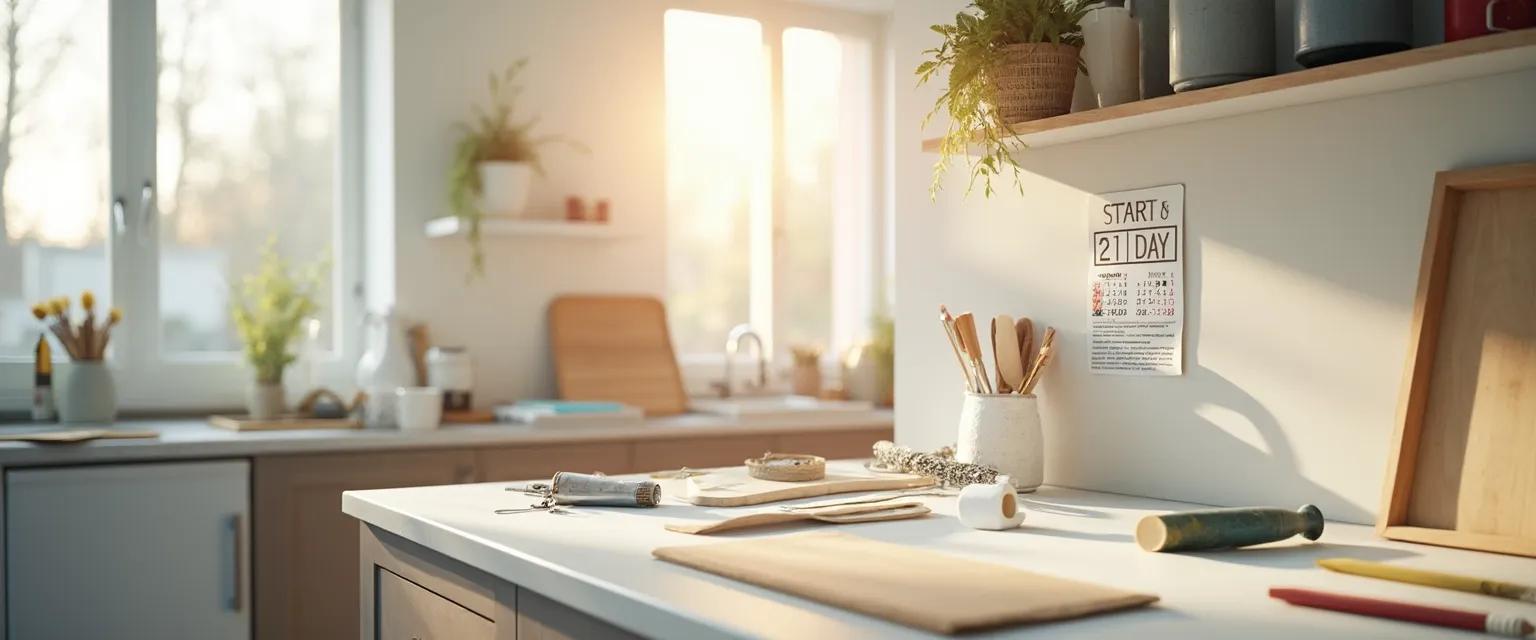21-Day Plan to Beat Procrastination During Home Improvements
Ever found yourself staring at paint swatches for months without making a decision? Procrastination during home improvements is a common challenge that leaves many homeowners stuck in renovation limbo. The good news? You can break this cycle in just 21 days with a structured approach that builds momentum through small, consistent actions. This science-backed method tackles renovation paralysis by creating psychological wins that transform how your brain approaches home projects. Let's explore how you can overcome procrastination during home improvements and finally create the space you've been dreaming about.
The key to defeating renovation procrastination lies in understanding that your brain craves small victories. When you establish micro-habits around your renovation tasks, you build neural pathways that make future action easier. This 21-day plan works because it breaks down overwhelming projects into manageable daily steps that eliminate the anxiety that fuels procrastination during home improvements.
Breaking Down Procrastination During Home Improvements: The First Week
The initial days are crucial for overcoming renovation resistance. Start with these proven techniques:
Days 1-3: Micro-Goal Setting
Begin by creating extremely small, achievable goals. Instead of "renovate the kitchen," try "select three potential paint colors" or "measure the counter space." These micro-goals bypass the brain's resistance to large tasks that often triggers procrastination during home improvements.
Days 4-5: Visual Progress Tracking
Create a simple visual tracker on your phone or a visible wall chart. Each completed micro-task gets marked, creating a visual representation of your progress. This activates your brain's reward system, making you more likely to continue the momentum.
Days 6-7: The Five-Minute Rule
Commit to just five minutes of renovation work daily. This powerful anti-procrastination technique works because once you start, you'll likely continue beyond the five minutes, effectively breaking through initial resistance.
Maintaining Momentum When Facing Home Improvement Procrastination
The second and third weeks focus on sustaining your progress with these strategies:
Scheduling for Busy Homeowners
Use time-blocking with buffer zones. Schedule 25-minute renovation sessions followed by 5-minute breaks. This approach works exceptionally well for busy people because it prevents burnout while maintaining consistent progress. Block these sessions during your natural high-energy periods to maximize effectiveness.
Psychological Triggers for Continued Action
Create environmental cues that prompt renovation activity. Place your selected paint samples somewhere you'll see them during morning coffee, or set a recurring alert with an encouraging message. These triggers bypass conscious resistance that leads to procrastination during home improvements.
Handling Renovation Setbacks
Prepare for obstacles by creating an "if-then" plan. For example: "If the hardware store doesn't have my first-choice materials, then I'll select my backup option immediately rather than delaying." This mental preparation technique prevents minor setbacks from derailing your entire renovation timeline.
By following this 21-day structure, you'll not only make significant progress on your home improvement projects but also rewire your brain's approach to tasks that previously triggered procrastination during home improvements. The key is consistency with small actions rather than sporadic bursts of major effort.




